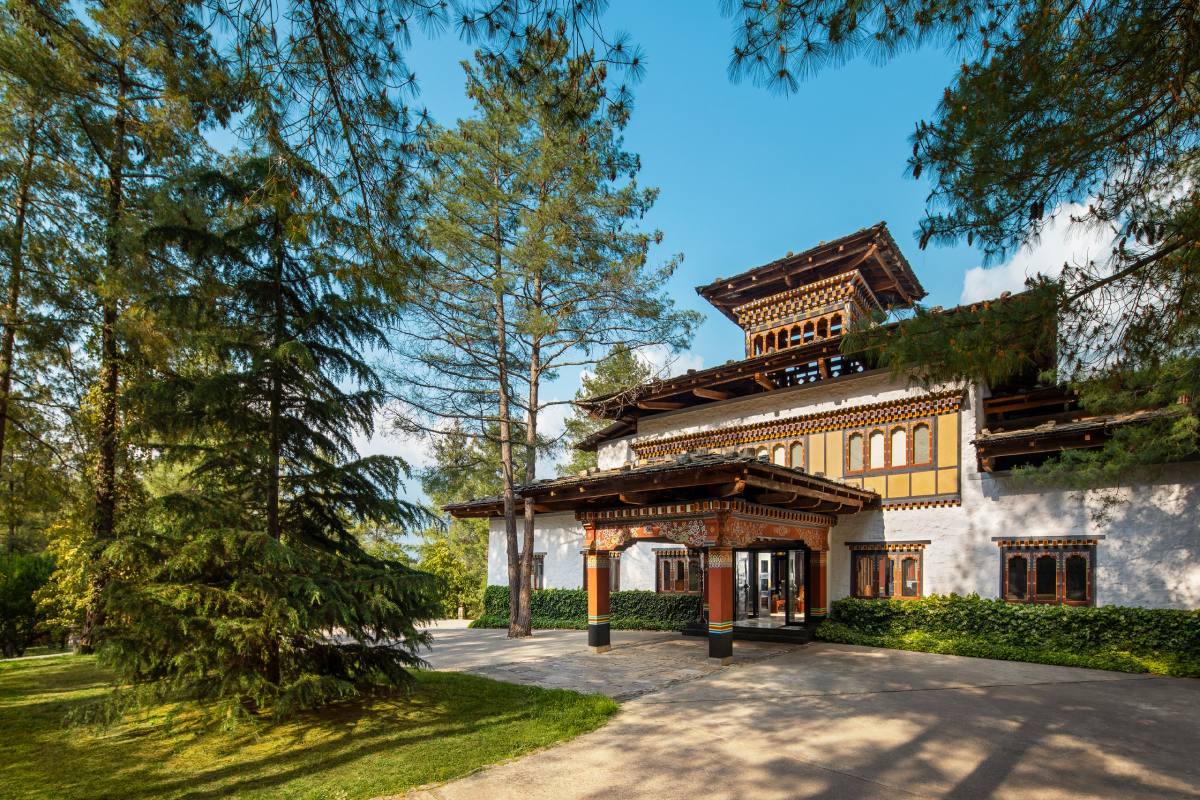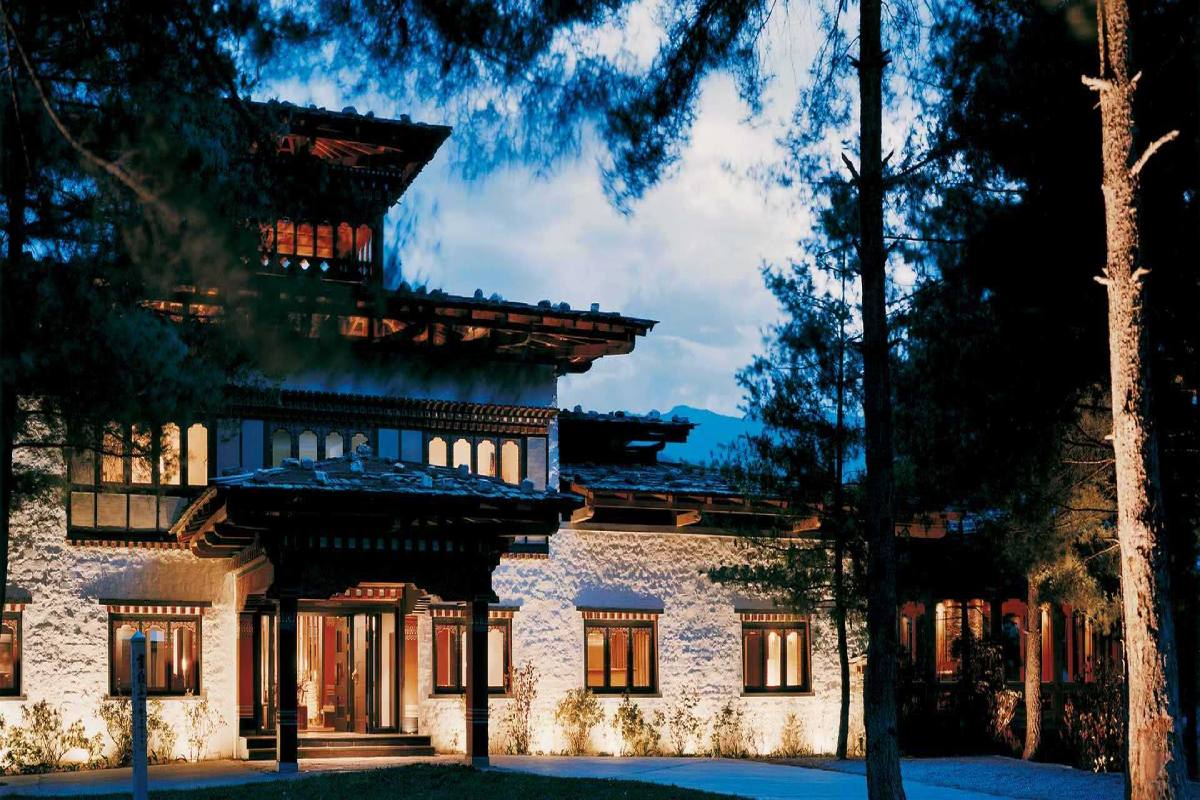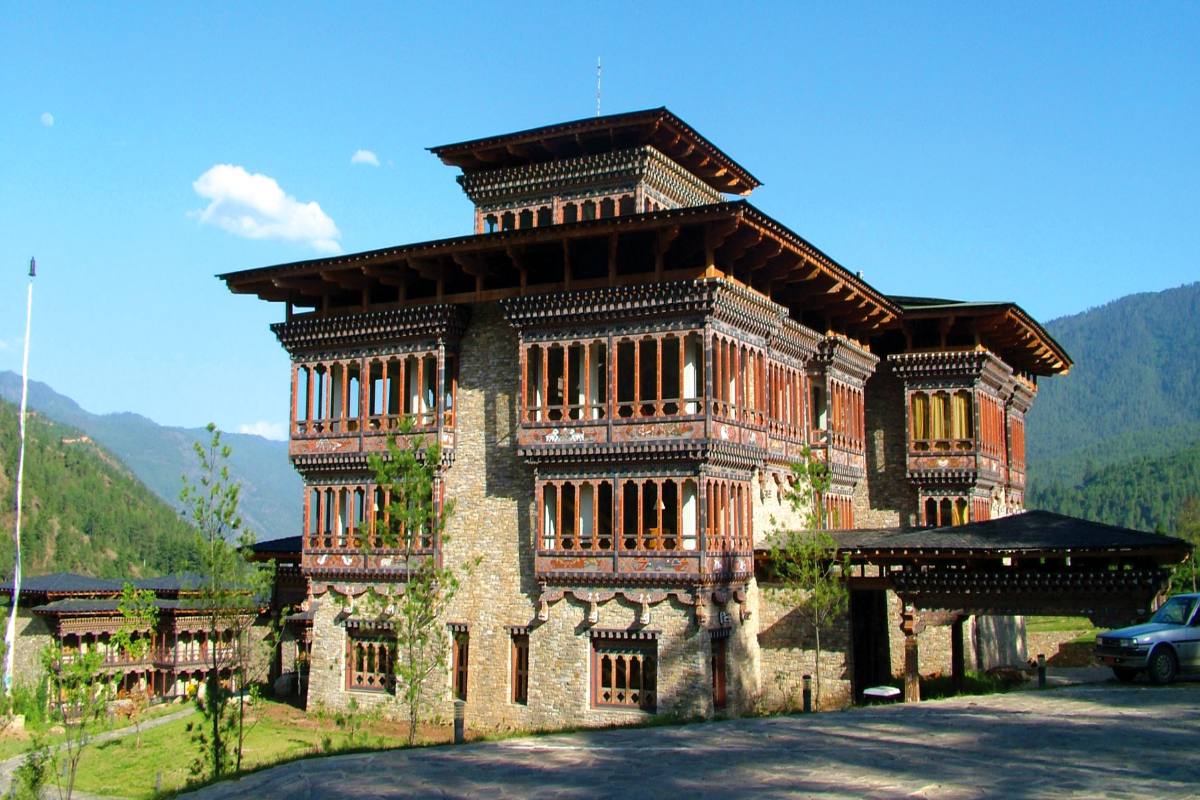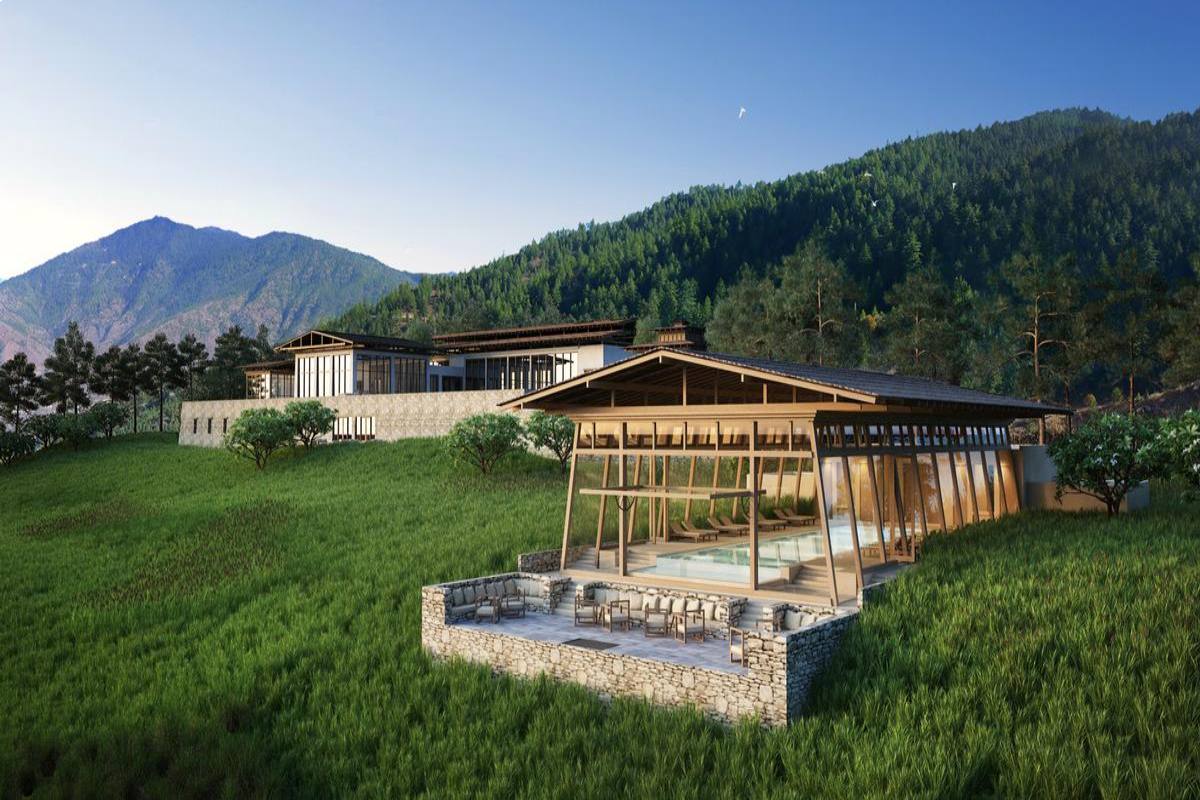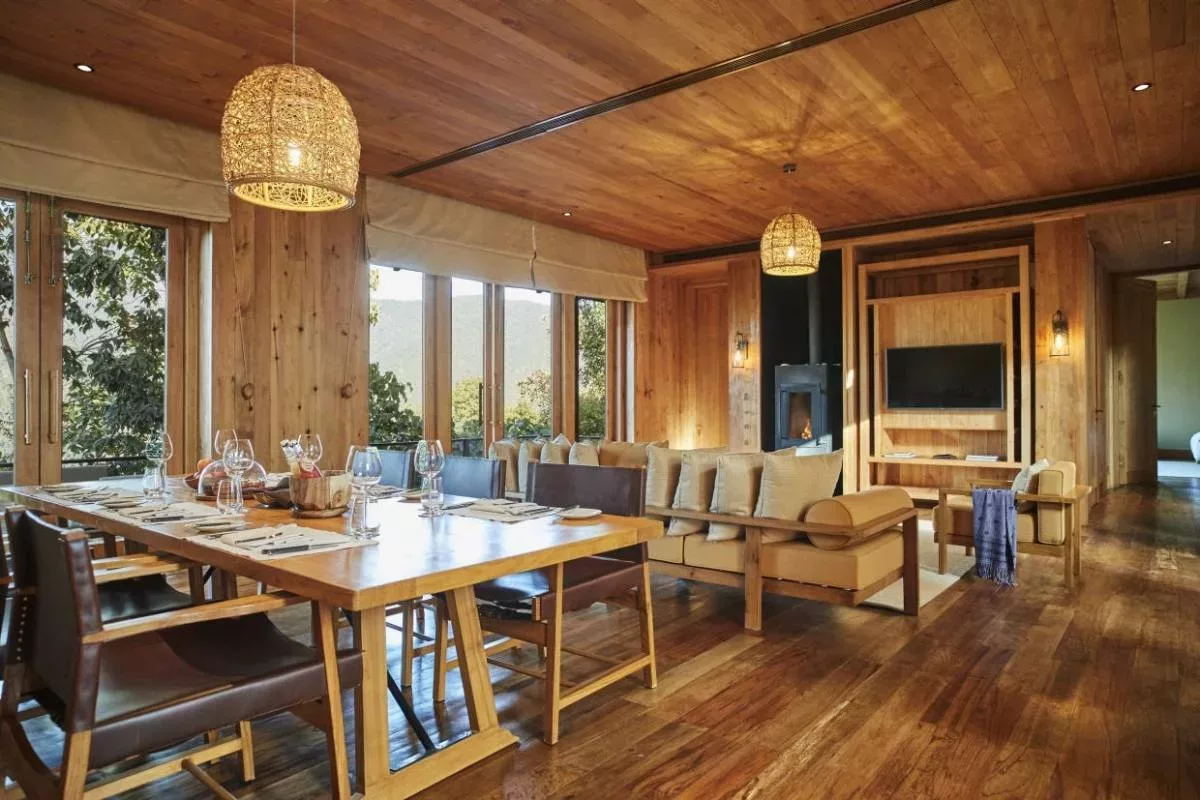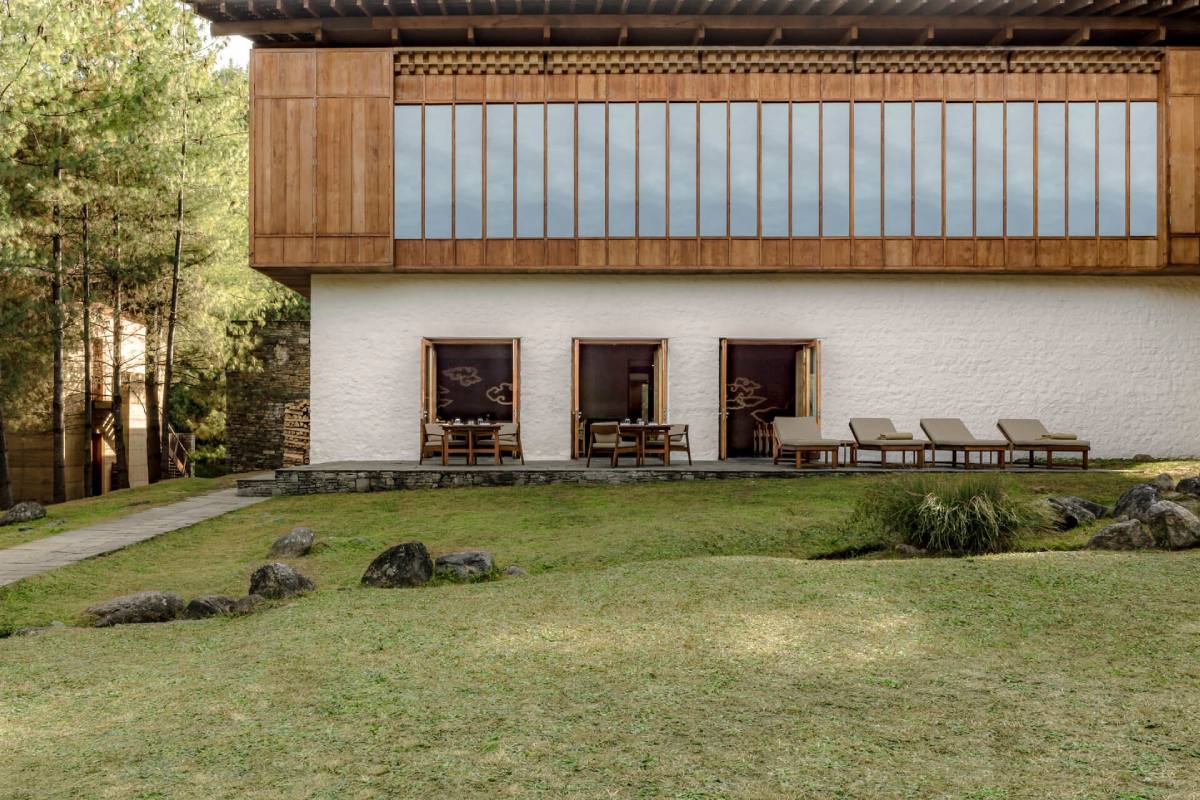Detailed Program
On arrival, you will be received by our representative and after a brief introduction you will begin with the following sightseeing:
Ta dzong: The only National Museum in Bhutan. The best among natural history museums in Asia, the Ta Dzong offers unique collections ranging from ancient Armor to textiles and THANGKHA paintings. Initially, Ta Dzong was built as the watch tower of Paro dzong later it was converted into a museum. The museum offers a great view of the Paro valley (This museum has been partially damaged by an earthquake last year and it’s under renovation whereby no one is allowed to go inside the building. Meanwhile, you will be able to see some of the artifacts, which have been moved for display in another building above the museum.)
Paro Rinpung Dzong: Also known as the “fortress of the heap of jewels “, it was built during the time of Zhabdrung Ngawang Namgyal in 1646. The approach to the Dzong is through a traditional covered bridge called the Nemi Zam. A walk through the bridge to the Dzong, over a stone inlaid path, offers a good view of the architectural wonder of the Dzong as well as the life around it. It is also the venue of the Paro Tshechu, held once a year inspiring.
Lunch will be served at the restaurant in Paro. After lunch drive to Thimphu. On arrival check into your hotel and refresh and relax. Dinner will be served at the hotel.
Places and attractions:
- Tashichho Dzong
- Semthoka Dzong
- Dochu La Pass
- Memorial Chorten
- Changangkha Lhakhang
- Zangdopelri
- The Tallest Buddha Image
- Tango And Cheri Monasteries
- The Handicrafts Emporium
- Traditional Medicine
- Zorig Chusum Institute
- National Library
- Weekend Market
- Botanical Garden
- Thadrak Goemba
- Tashigang Goemba
- Chizhing Samtencholing Lhakhang
Accommodation options:
– Zoo where one can see the national animal of Bhutan TAKIN, which has the head of a goat and the body of a cow.
– Traditional hospital: get a tour of the grounds and learn how they make and distribute herbal medicine.
– Painting school: The school of arts & painting teaches the children to master the 13 types of arts and crafts of Bhutan.
– National library: is another sight to see the collection of Bhutanese scriptures dating back to the 8th century.
– Postal Museum
– Folk Heritage museum is a replica of a medieval farmhouse and is patronized by HM the Queen Dorji Wangmo Wangchuck. In the village, we still have this kind still alive.
– The textile museum is patronized by HM the Queen Sangay Choden Wangchuck to protect the textile heritage of Bhutan. There are some old collections along with the display of vegetable dyes and materials used for Bhutanese textiles.
– Traditional paper factory displays Bhutanese paper making in the process.
– Tashichho Dzong: Also known as the “fortress of the glorious religion”, the Dzong was initially erected in 1641 and rebuilt by King Jigme Dorji Wangchuck in 1965. Tashichhodzong houses the main secretariat building and the central monk body.
In the evening you can stroll around Thimphu town on your own. Or if you need the assistance of your guide then they will be happy to guide you in the town. Dinner will be served at the hotel or local restaurant.
Places and attractions:
- Tashichho Dzong
- Semthoka Dzong
- Dochu La Pass
- Memorial Chorten
- Changangkha Lhakhang
- Zangdopelri
- The Tallest Buddha Image
- Tango And Cheri Monasteries
- The Handicrafts Emporium
- Traditional Medicine
- Zorig Chusum Institute
- National Library
- Weekend Market
- Botanical Garden
- Thadrak Goemba
- Tashigang Goemba
- Chizhing Samtencholing Lhakhang
Accommodation options:
Have breakfast from the hotel and you will drive for another 12 km to the monastery. Your car will drop you at the nearest motor road where you will begin your hike. The hike to the monastery will be around 45 mins.
Tango Goemba or monastery: the famous Tango monastery in Thimphu derived its name from a deity. The word Tango literally means ‘horse head’. It is derived from the deity Tandin (Hayagriva), which is represented as horse-headed. In 1222, when Phajo Drugom Zhigpo was teaching in Dodena, he heard the neighing of a horse from the direction of Tango. On approaching the place, he saw a cliff (behind the monastery) believed to be the body of deity Tandin in flames. The deity appeared before him and prophesied that Phajo would build a meditation center in Tango and lay foundations for the Drukpa Kagyu School in Bhutan.
The divine madman “Drukpa Kunley” built the present building in the 15th century. In 1616 Zhabdrung Ngawang Namgyal visited Tango Goemba and meditated in a cave nearby. The head lama, a descendant of Lama Drukpa Kunley, presented the Goemba to the Zhabdrung, who carved a sandalwood statue of Chenrezig, which he installed in the monastery.
Today Tango is the residence of an important young Trulku (reincarnate lama) who is recognized as the 17th reincarnation of the highly respected fourth Desi, Gyalse Tenzin Rabgye, whose previous incarnation passed away in 1830. Visit the temple inside and you will retrace to Thimphu. Lunch will be served in one of the restaurants in Thimphu.
After lunch, you will drive to Punakha via the Dochula pass 3050 m, which offers great views of Bhutan’s Himalayan peak. Punakha is the old capital of Bhutan and the religious body still uses it as their winter capital. Check into the hotel and dinner will be served at the hotel.
Places and attractions:
- Punakha Dzong
- Khamsum Yulley
- Talo Goenpa
- Nalanda Buddhist College
- Chorten Nyingpo Lhakhang
- Sangchen Dorji Lhuendrup
- Limukha Village
- Ritsha Village
Accommodation options:
After having breakfast you will first hike to Khamsum yelling temple: This temple has the best present-day architecture and is being built by the crown prince’s mother Ashi Tsering Yangdon Wangchuck. The hike to and fro will not take more than 2 hrs.
Punakha Dzong: Built strategically at the Junction of Pho Chu and Mo Chu rivers in 1637 by Zhabdrung Ngawang Namgyal to serve as the religious and administrative center of the region. Damaged by four catastrophic fires and an earthquake, the Dzong has been fully restored by the present King.
After lunch, you will visit Chimi Lhakhang. A walk to and fro will not be more than 45 mins Chimi Lhakhang- temple of the Divine Madman who is popularly known as Drukpa Kuenley. He inherited the Divine madman title since he revolted against orthodox Buddhism in his time. He taught the people that religion is an inner feeling and it’s not necessary that one should be an ordained monk. He is believed as a symbol of fertility and most childless couples go to his temple for blessing. Keith Dowan –Drukpa Kuenley-The Divine Madman, does the translation of the life of Drukpa Kuenley.
Evening back to the hotel and dinner will be served at the hotel.
Places and attractions:
- Punakha Dzong
- Khamsum Yulley
- Talo Goenpa
- Nalanda Buddhist College
- Chorten Nyingpo Lhakhang
- Sangchen Dorji Lhuendrup
- Limukha Village
- Ritsha Village
Accommodation options:
After early breakfast from the hotel begin your drive to Trongsa across Pelela pass (3300 m). This pass is traditionally considered the boundary between West and Central Bhutan.
On reaching Trongsa you will visit the Trongsa dzong, situated at the altitude of 2300 m and built-in 1647 by the Zhabdrung Ngawang Namgyel. It is the ancestral home of the Royal family both the first and second King ruled the country from this ancient seat. All four Kings held the post of Trongsa Penlop (honorary governor) prior to being crowned as King. The Dzong is a massive structure with many levels, which slope down the contours of a hill on which it perches. Because of its highly strategic position as the only connecting route between east and west, the Trongsa Penlop was able to control the whole of the eastern region effectively.
Ta dzong museum, which has the same name to Paro Ta dzong. This watchtower, which once guarded the Trongsa Dzong against internal rebellion, stands impressively on the hill and was refurbished and turned into a museum in the year 2008. Today it provides visitors an insight into the historical reigns of our monarchs and the other arts and artifacts.
After lunch, you shall proceed to Bumthang, the most spectacular valleys in Bhutan and the heartland of Buddhism. Ahead of Trongsa cross Youtongla pass (3,400m) and from here the landscape changes with dense forests of conifers. Finally, Bumthang beings in the wide, open, cultivated Chumey valley. Dinner and overnight at the lodge in Bumthang.
Places and attractions:
Accommodation options:
Bumthang is the general name given to a complex of four valleys – Chumey, Choekhor, Tang, and Ura with altitudes varying from 2,600 m to 4,000 m. Today’s sightseeing begins with the cultural visit to monasteries and the dzong.
Jambay Lhakhang & Kurjey Lhakhang (8th-century fame) is one of the most sacred places in Bhutan as Guru Rimpoche meditated here. From Kurjey monastery, a tarmac road heads south along the right bank of the river to the Jambay Lhakhang. Like Kyichu Lhakhang in the Paro valley, Jambay Lhakhang is also one of the 3 temples from 108 temples constructed in the 7th century by the King Songtsen Gampo of Tibet.
From Kurjey Lhakhang, you will take a short hike across the river and the barley field to visit Tamshing Lhakhang, founded in 1501 by Pema Lingpa. It contains interesting Buddhist paintings.
After lunch, you will visit the dzong and explore the small town.
Jakar Dzong, the dzong of the white bird, houses the administrative seat of the district and is the only dzong in the country that does not contain a Drukpa monastic community. Your dinner will be served at the hotel.
Places and attractions:
Accommodation options:
After early breakfast from the hotel, you will drive to tang valley. The drive is expected to last for almost an hour and a half on the unpaved road to the Ki Zam (bridge). From the bridge, you will have to hike for another 30-35 mins to the Ugyen Chholing Palace. Before reaching you will first visit the Tang Rimochen monastery. Pema Lingpa built this monastery in the 14th century to mark a sacred place where Guru Rinpoche meditated. The original name “Tag Rimochen” is derived from an impression of tiger’s stripes that appear on a rock cliff behind the building.
After visiting the monastery you will hike further to Ugyen Chholing Palace. Deb Tsokye Dorji, the one-time ruler of Trongsa and a descendant of the terton Dorji Lingpa, originally built this palace. The present structures, including the tshug Lhakhang (main temple), Utse (central tower), and Chamkhang (dance house) are more recent, having been rebuilt after their collapse in the 1897 earthquake.
Your lunch will be served at the palace. After lunch, you will retrace your hike and then drive back to Bumthang. On the way, you will visit Membartsho or the burning lake. It is believed that Pema Lingpa the treasure discoverer has found several of Guru Rinpoche’s terma (treasure). Dinner will be served at the hotel itself.
Places and attractions:
Accommodation options:
After breakfast, you will retrace your drive to Gangtey. Lunch will be served at Chendbji restaurant. After lunch, you will walk around 100 meters to Chendbji Chorten built in the 18th century patterned on the Swayambunath temple in Kathmandu. It was built by Lama Shida, from Tibet, to cover the remains of an evil spirit that was killed at this spot.
On arrival, you will first visit Gangtey Goemba monastery. Gangtey is also known as the winter roosting ground of black-necked cranes that migrate from the arid plains of the Tibetan plateau to pass winter in milder and lower climates.
Gangtey Goemba / monastery enjoys the valley’s prime chunk of real estate, on a hill overlooking the green expanse of the entire Phobjikha valley. The extensive complex consists of the central Goemba and outlying monk’s quarters, meditation centers, schools, and a small guesthouse. In the 15th century, Pema Lingpa the famous treasure discoverer prophesied that a Goemba named Gang-teng (hilltop) would be built on this site and that his teachings would spread from here. Gyalse Pema Thinley, the grandson, and reincarnation of Pema Lingpa founded this only Nyingma temple here in 1613, and Tenzing Legpai Dhendup, the second reincarnation, built the Goemba.
Later check into the hotel and dinner will be served at the hotel.
Places and attractions:
- Dargay Goemba
- Gangtey Gompa
- Temple Of Sha Radap
- Gaselo & Nahee Village
- Adha And Rukha Village
- Shaa Region Of Wangdiphodrang
- Bhey Langdrag Nye
Accommodation options:
After breakfast check out from the hotel and you will retrace your drive to Paro. Lunch will be served at the restaurant in Dochu la. Continue your drive to Paro and on arrival, you will visit Kyichu temple, one of the last three surviving temples among 108 temples. In the 8th century, a Tibetan King built 108 such temples. To date, only three had survived, two in Bhutan and one in Tibet known as the Jokhang in Lhasa. Later check into your hotel and dinner will be served at the hotel.
Places and attractions:
- Rinpung Dzong
- Drukgyel Dzong
- Taktshang
- Kyichu Lhakhang
- Kila Gompa
- Dungtse Lhakhang
- Tachog Lhakhang
- Dzongdrakha
Accommodation options:
After breakfast hike to the Taktsang monastery, which was built on the cliffs. The entire hike (to and fro) will take about 3 hours of average walking speed from Ramthangkha (the terminating point of the motorable road)
Taktsang monastery is one of the most venerated pilgrim sites of Bhutan. The monastic complex clings to the rock towering 900 m above the valley. Taktsang is located at 2950 m above sea level.
In accordance with the prophecy of Guru Rinpoche, Khandro Yeshi Tshogyal, the consort of Guru Rinpoche, meditated at Taktsang, transforming herself into a tigress to protect herself from harmful humans and wild animals. People who happened to be in the vicinity of Taktsang in those days had seen a real tigress residing in the cave. The cave thus came to be known as “Taktsang” meaning “the tigress’s lair”. The image of the wrathful Guru Dorje Drolo one of his eight manifestations mounting the tigress, as we witness today inside the temple is the form of a tigress in our impure perception but in reality, the tigress is the form assumed of Khandro Yeshi Tshogyal. The monastery was built in the year 1692 under the command of the fourth Desi (secular ruler of Bhutan) Gyalse Tenzin Rabgye. Today his reincarnation is residing in the Tango monastery.
After lunch, you will visit Drukgyel dzong, or the Fort of Drukpa victory, which is almost 10 miles north of the town. From this fortress, Bhutanese repelled several invasions by Tibetans throughout the course of history. Looming above the smoldered ruins if the weather is clear you can see the snowcapped peak of Mount Jhomolhari. Dinner and overnight at the hotel.
Places and attractions:
- Rinpung Dzong
- Drukgyel Dzong
- Taktshang
- Kyichu Lhakhang
- Kila Gompa
- Dungtse Lhakhang
- Tachog Lhakhang
- Dzongdrakha
Accommodation options:
Have breakfast from the hotel and our representative will see you off at the airport. Goodbye and have a nice flight. The Dragon Kingdom will soon disappear within its guardian mountains.
Frequently Asked Questions
Some of the places and attractions included in the Thimphu sightseeing on the Amankora Odyssey tour are Tashichho Dzong, Semthoka Dzong, Dochu La Pass, Memorial Chorten, Changangkha Lhakhang, Zangdopelri, The Tallest Buddha Image, Tango and Cheri Monasteries, Handicrafts Emporium, Traditional Medicine, Zorig Chusum Institute, National Library, Weekend Market, Botanical Garden, Thadrak Goemba, Tashigang Goemba, and Chizhing Samtencholing Lhakhang.
The Tango Monastery, a sacred abode of Buddhist practices, stands 14 kilometers north of Thimphu, the capital city of Bhutan, in close proximity to the grandeur of Cheri Mountain. This holy site was established by none other than the venerable Lama Gyalwa Lhanampa himself in the 13th century, and later, in 1688, was transformed into its current architectural splendor under the watchful eye of the illustrious Tenzin Rabgye, the 4th Temporal Ruler.
Some of the places and attractions included in the Bumthang sightseeing on the Amankora Odyssey tour are Jakar Dzong, Kurjey Lhakhang, Jambay Lhakhang, Ura Valley, Red Panda Brewery, and Mebartsho.
Taktsang Monastery is one of the most venerated pilgrimage sites of Bhutan. The monastic complex clings to the rock towering 900 m above the Paro valley. On the Amankora Odyssey tour, it takes about 3 hours of average walking speed to hike to and fro from Ramthangkha (the terminating point of the motorable road) to Taktsang Monastery.
- Inclusion
- Exclusion
- Insurance
- Airport pick-up and drop-off by private vehicle.
- 3-star accommodation (4 & 5 stars may require an additional premium update).
- Bhutan visa fee – including all necessary processing
- Route Permit
- Three meals per day during your stay in Bhutan
- A licensed Bhutanese tour guide
- All land transportation by private vehicle
- Camping equipment and haulage for trekking tours
- Sightseeing as per itinerary
- Monuments entrance fees where applicable
- Drinking water
- All internal taxes and charges
- A sustainable development fee of $200. (This sustainable development fee goes towards free education, free healthcare, and poverty alleviation, along with the building of infrastructure.)
- Airfare & Travel Insurance
- Expenses of personal nature, Tips to guides and drivers
- Expenses occurred due to unavoidable events i.e. road wrecks, flight delays etc.
Package does not include insurance of any kinds, and that you are required to obtain separate coverage from your home country before your trip begins.

